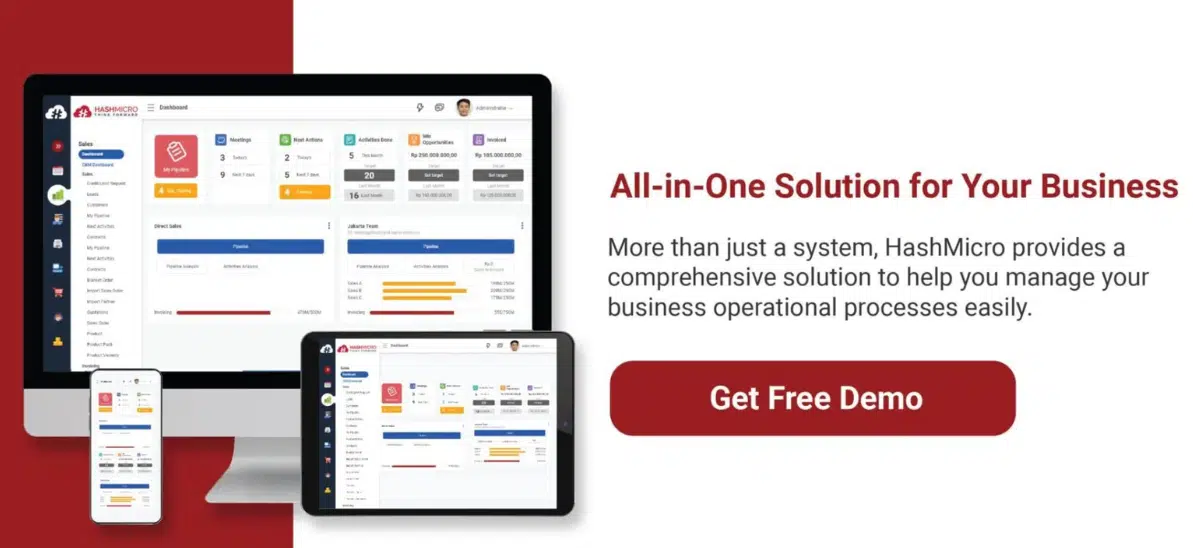Managing inventory effectively is crucial for business continuity and customer satisfaction. A key aspect of this process is determining the right reorder point to prevent stock shortages. Without it, businesses risk stockouts that lead to lost sales or overstocking that increases holding costs.
An optimized reorder point ensures a balance between maintaining adequate stock and reducing expenses. By analyzing demand patterns and supplier lead times, businesses can calculate reorder points accurately. This helps avoid last-minute orders, minimize procurement inefficiencies, and ensure a steady inventory flow.
In today’s competitive market, technology plays a vital role in inventory management. Automated systems calculate reorder points, provide real-time stock visibility, and integrate with supplier networks. Implementing such solutions enhances efficiency, supports data-driven decisions, and improves overall profitability.
This article will explore the strategic nuances of inventory reorder point tips, guiding you through the process of calculating and implementing them to ensure your stock levels are always in perfect harmony with your business needs.
Table of Content:
Table of Content
Key Takeaways
|
What are Reorder Points and Quantities?
Reorder points and quantities are essential inventory metrics that determine when and how much inventory to order. A reorder point represents the minimum level of inventory that triggers a new purchase order, while a reorder quantity refers to the amount of inventory ordered each time.
These metrics rely on various factors such as demand, lead time, safety stock, and carrying costs. To calculate reorder points and quantities, many businesses commonly use the economic order quantity (EOQ) model.
Proper reorder points and quantities are crucial in inventory management for maintaining optimal stock levels and ensuring seamless operations. When inventory reaches the reorder point, it serves as a signal to initiate a new purchase order.
Similarly, the reorder quantity determines the amount of inventory required to meet demand and replenish the stock. By carefully managing reorder points and quantities, businesses can avoid running out of stock, minimize storage costs, and streamline the replenishment process.
These metrics allow companies to balance holding sufficient inventory to meet customer demand and reducing excess stock that ties up capital.
Calculating appropriate reorder points and quantities involves considering various aspects such as historical demand patterns, lead time variability, and safety stock requirements. A systematic approach, like utilizing the EOQ model, helps determine the optimal reorder point and quantity that minimize costs and ensure efficient inventory management.
Dynamic Reorder Points
As a business in Singapore, it is essential to understand and adapt to fluctuating market demands and variable lead times. Dynamic reorder points provide a solution to this challenge by adjusting reorder points in response to changing conditions.
By employing dynamic reorder points, you can ensure that your inventory levels always align with market demands, preventing both stockouts and overstocking.
Dynamic reorder points are recalculated regularly to reflect current market conditions and business realities. They consider factors such as demand fluctuations and lead time variability, allowing you to respond more agilely to changes in supply and demand.
To implement dynamic reorder points effectively, consider utilizing various tools, such as demand forecasting tools, lead time tracking systems, and inventory management software. These tools enable you to gather accurate data and insights, which in turn inform your decision-making process.
By leveraging technology, you can make informed adjustments to your reorder points and ensure that your inventory levels are optimized at all times.
Implementing dynamic reorder points allows you to be responsive to market demands and supply chain fluctuations. By staying adaptable and employing the right tools and strategies, you can maintain optimal inventory levels and meet customer expectations.
How to Calculate Inventory Reorder Points and Quantities
In inventory management, calculating reorder points and quantities is essential for maintaining optimal stock levels and efficient inventory control. The economic order quantity (EOQ) model is a commonly used technique for determining these metrics.
By understanding the EOQ safety stock formula and considering factors such as lead time and safety stock, you can accurately calculate reorder points and quantities for your business.
The EOQ formula is given by:
EOQ = √[(2 x D x S) / H]
Where:
- D represents the annual demand for a specific item
- S is the ordering cost per order
- H refers to the holding cost per unit per year
By inputting the appropriate values for D, S, and H into the EOQ formula, you can determine the economic order quantity, which represents the optimal order quantity for minimizing costs and maintaining efficient inventory levels.
Additionally, to calculate the reorder point, you need to consider the lead time (the time it takes to receive an order) and the safety stock (a buffer stock held to account for unexpected fluctuations in demand or delays in the supply chain). Specifically, the reorder point can be calculated using the following formula:
Reorder point = (EOQ x Lead time) + Safety stock
This formula ensures that you have enough inventory on hand to cover the lead time and potential demand fluctuations, preventing stockouts and ensuring a smooth flow of goods to meet customer orders.
Benefits of Optimizing Reorder Points and Quantities
Optimizing reorder points and quantities brings a wealth of benefits to your business. By effectively optimizing reorder points, you can reduce overstocking and stockouts, which in turn improves your cash flow and profitability.
Cloud-based inventory allows for more accurate tracking, helping to fine-tune these reorder points with real-time insights.
One of the key advantages of optimizing reorder points and quantities is the ability to minimize the costs associated with ordering and holding inventory. By accurately managing your inventory levels, you can free up cash for other needs and improve your overall profit margins.
Furthermore, by strategically optimizing reorder points and quantities, you can enhance your customer service and loyalty. Your ability to meet customer demand and consistently deliver orders on time will greatly improve customer satisfaction and retention.
Satisfied customers are more likely to become repeat customers and recommend your business to others, giving you a competitive advantage in the market.
Strategic Considerations for Inventory Reorder Point Optimization
When it comes to optimizing reorder points, it’s important to take a strategic approach. Here are some key considerations to keep in mind:
- Cash flow management: Good cash flow management helps ensure you have the funds to keep the right amount of inventory. It also helps avoid too much storage cost and the chance of running out of stock.
- Supplier relationships: Creating good relationships with suppliers is key to managing inventory orders well. Open communication, good negotiation, and trust can lead to faster inventory delivery and shorter wait times. Also, working closely with trusted suppliers might get you better prices and payment conditions.
- Inventory management systems: The system automate tracking, analyze data in real-time, and work well with other business systems. This helps you make smarter decisions about when to order more stock, reduces the risk of running out, and helps you use your inventory budget wisely.
By considering these strategic factors in your reorder point optimization process, you can achieve a balanced inventory investment, effectively manage your cash flow, strengthen supplier relationships, and benefit from the automation and real-time data analysis offered by inventory management systems.
How to Use Inventory Management Software to Optimize Reorder Points and Quantities
Inventory management software is a powerful tool that can help you optimize your reorder points and quantities, ensuring that you always have the right amount of inventory on hand.
By automating calculations, tracking inventory levels, sending alerts, and even placing orders, this software streamlines the entire process and saves you valuable time and effort.
With inventory management software, you can easily track your inventory levels in real-time, ensuring that you never run out of stock or carry excessive inventory. This helps you optimize your reorder points by adjusting them based on factors such as demand patterns and seasonality.
When the reorder point is reached, the software can send you alerts, notifying you that it’s time to place an order. This eliminates the need for manual monitoring and ensures that you never miss a restocking opportunity.
Furthermore, the software can calculate reorder quantities using the economic order quantity (EOQ) formula, taking into account the cost of inventory holding and ordering. This helps optimize your reorder quantities, ensuring that you order the right amount of stock each time, minimizing waste and maximizing efficiency.
By using inventory management software to automate calculations, track inventory levels, send alerts, and place orders, you can optimize your reorder points and quantities, leading to improved inventory control and cost savings.
When choosing inventory management software, consider features such as EOQ calculation, advanced inventory tracking, reorder alerts, demand forecasting capabilities, comprehensive reporting, and integration with other systems. This ensures that the software meets all your business needs and allows for seamless integration with your existing processes.
How to Choose Inventory Management Software
When it comes to optimizing your inventory management processes, choosing the right software is crucial. To ensure the software aligns with your business needs and goals, consider the following:
1. Evaluate your business needs
Before selecting inventory management software, assess your specific business requirements. Identify which features and functions are essential for your operations, such as EOQ calculation, inventory tracking, reorder alerts, demand forecasting, reporting, and integration with other systems.
2. Compare software features
Research and compare different inventory management software options. Look for features that address your unique business needs and can streamline your inventory management processes. Assess the software’s ability to automate calculations, track inventory levels, and adjust reorder points based on market demand.
3. Test before buying
Take advantage of free trials or demos offered by inventory management software providers. Testing the software allows you to evaluate its user interface, functionality, and compatibility with your existing systems. This step is essential to ensure the software meets your expectations and can effectively optimize your reorder points and quantities.
HashMicro provides a free demo access for you to gain first-hand experience in using our system. Contact our experts now and schedule yourself for a free demo.
4. Seek customer support and training
Choose inventory management software that offers reliable customer support and training. Adequate support ensures that you can resolve any issues or concerns promptly. Training resources can help you and your team get up to speed with the software quickly, maximizing its benefits.
Benefits of Using Inventory Management Software
Efficient inventory management is crucial for any business aiming to optimize stock levels, reduce costs, and enhance operational efficiency. Without the right tools, businesses risk overstocking, stockouts, and inaccurate forecasting, all of which can disrupt the supply chain and impact profitability.
Inventory management software provides a comprehensive solution by automating key processes, improving demand forecasting, and integrating seamlessly with suppliers. By leveraging this technology, businesses can streamline inventory tracking, enhance decision-making, and ensure a smooth flow of goods. Below are the key benefits of using inventory management software:
1. Accurate demand forecasting
Inventory management software leverages historical data and demand patterns to predict future inventory needs. This ensures businesses maintain optimal stock levels, reducing the risks of stockouts or overstocking while improving overall supply chain efficiency.
2. Optimized reorder points
By analyzing demand trends, historical sales data, and supplier lead times, the software calculates precise reorder points. This ensures inventory is replenished at the right time, preventing disruptions in operations and enhancing customer satisfaction.
3. Automation of inventory processes
Manual inventory tracking can be time-consuming and prone to errors. Inventory management software automates critical processes such as stock adjustments, reorder point calculations, and order placements, allowing businesses to save time and reduce human errors.
4. Real-time inventory tracking
With real-time tracking capabilities, businesses gain complete visibility into their inventory levels across multiple locations. This allows for more efficient inventory control, reducing the chances of running out of stock or accumulating excess products.
5. Automated alerts and notifications
The software provides automated alerts when inventory levels approach the designated reorder point. This proactive approach enables businesses to place orders promptly, avoiding stock shortages and ensuring smooth business operations.
6. Integration with supplier systems
Many inventory management solutions integrate with supplier systems, allowing for automatic order placements when stock levels drop. This eliminates manual ordering, reduces errors, and improves overall supply chain coordination.
7. Enhanced cost efficiency
By optimizing order quantities using Economic Order Quantity (EOQ) analysis, businesses can reduce unnecessary storage costs and minimize losses from obsolete or expired inventory. This leads to more efficient financial resource allocation.
8. Data-driven decision making
The software generates comprehensive reports and analytics, providing insights into inventory performance, sales trends, and supplier reliability. With this data, businesses can make informed decisions, improve procurement strategies, and enhance operational efficiency.
9. Improved operational efficiency
By automating and streamlining inventory-related tasks, businesses can reduce administrative workload and improve overall productivity. Employees can focus on core business activities rather than manually managing inventory.
10. Scalability and growth support
Inventory management software is highly scalable, adapting to the growing needs of businesses. Whether managing a small store or a large enterprise, the system ensures inventory processes remain efficient, even as business operations expand.
By implementing inventory management software, businesses can achieve better inventory control, reduce costs, and enhance productivity, ultimately driving long-term success.
Examples of Using Reorder Points in Inventory Management
Reorder points play a crucial role in inventory management, allowing businesses to optimize stock levels, avoid stockouts, and prevent overstocking. By setting appropriate reorder points, you can ensure optimal stock levels to meet customer demand efficiently.
Let’s explore some real-world examples and case studies that demonstrate how businesses have effectively used reorder points to improve their inventory management.
Case study 1: optimizing stock levels
Company XYZ, a leading e-commerce retailer, implemented a dynamic reorder point strategy to optimize their stock levels. By analyzing historical sales data and using demand forecasting tools, they were able to determine the right reorder point that minimized stockouts while avoiding overstocking.
As a result, Company XYZ experienced a significant reduction in missed sales opportunities and improved customer satisfaction.
Case study 2: reducing shipping costs
Levi’s, a renowned denim manufacturer, adopted a strategic approach to setting reorder points to reduce shipping costs. By carefully analyzing their inventory and supply chain data, they identified the optimal reorder point that allowed them to place fewer, but larger, orders.
This not only helped in reducing shipping costs but also streamlined their inventory management process, improving overall operational efficiency.
These case studies demonstrate the importance of well-calculated reorder points in inventory management. By avoiding stockouts and overstocking, businesses can maximize their operational efficiency and improve customer satisfaction. Furthermore, by minimizing the frequency of orders, companies can save on shipping costs and optimize their supply chain.
Conclusion
Mastering reorder points and quantities is more than just maintaining stock levels. It is about optimizing inventory strategically to drive efficiency and business growth. A well-calculated reorder system ensures timely replenishment, minimizes waste, and aligns with operational goals.
Advanced inventory management software, such as HashMicro’s, enhances precision in stock control. With real-time tracking, automated scheduling, and in-depth reporting, businesses can make data-driven decisions. These features streamline supply chain processes, reduce errors, and improve overall inventory management.
By leveraging technology, businesses can cut costs while enhancing customer satisfaction. An optimized inventory system prevents stockouts, reduces excess stock, and improves workflow efficiency. Take the next step in inventory optimization by exploring advanced inventory management solutions today.
Start your free demo today!
Question About Inventory Reorder Point
-
-
What are common mistakes when setting reorder points?
One major mistake is failing to account for sudden market shifts, such as economic downturns or unexpected spikes in demand. Another error is setting reorder points without considering supplier reliability—delays or inconsistencies in supply chains can disrupt inventory flow. Lastly, many businesses overlook automation, relying on manual tracking, which increases the risk of miscalculations and inefficiencies.
-
How can businesses adjust reorder points for seasonal demand?
Beyond analyzing past sales trends, businesses should use predictive analytics to anticipate future demand fluctuations. Collaborating with suppliers for flexible order arrangements can also help adjust stock levels dynamically. Additionally, businesses can implement phased inventory adjustments—gradually increasing stock before peak seasons and reducing it post-season to avoid overstocking.
-
How often should businesses review their reorder points?
While a quarterly review is a good practice, businesses in fast-moving industries (e.g., retail or e-commerce) may need to reassess reorder points monthly or even bi-weekly. External factors such as supplier performance, geopolitical events, and economic conditions should also trigger unscheduled reviews. The key is maintaining agility in inventory management to adapt to changing market conditions.
-






































